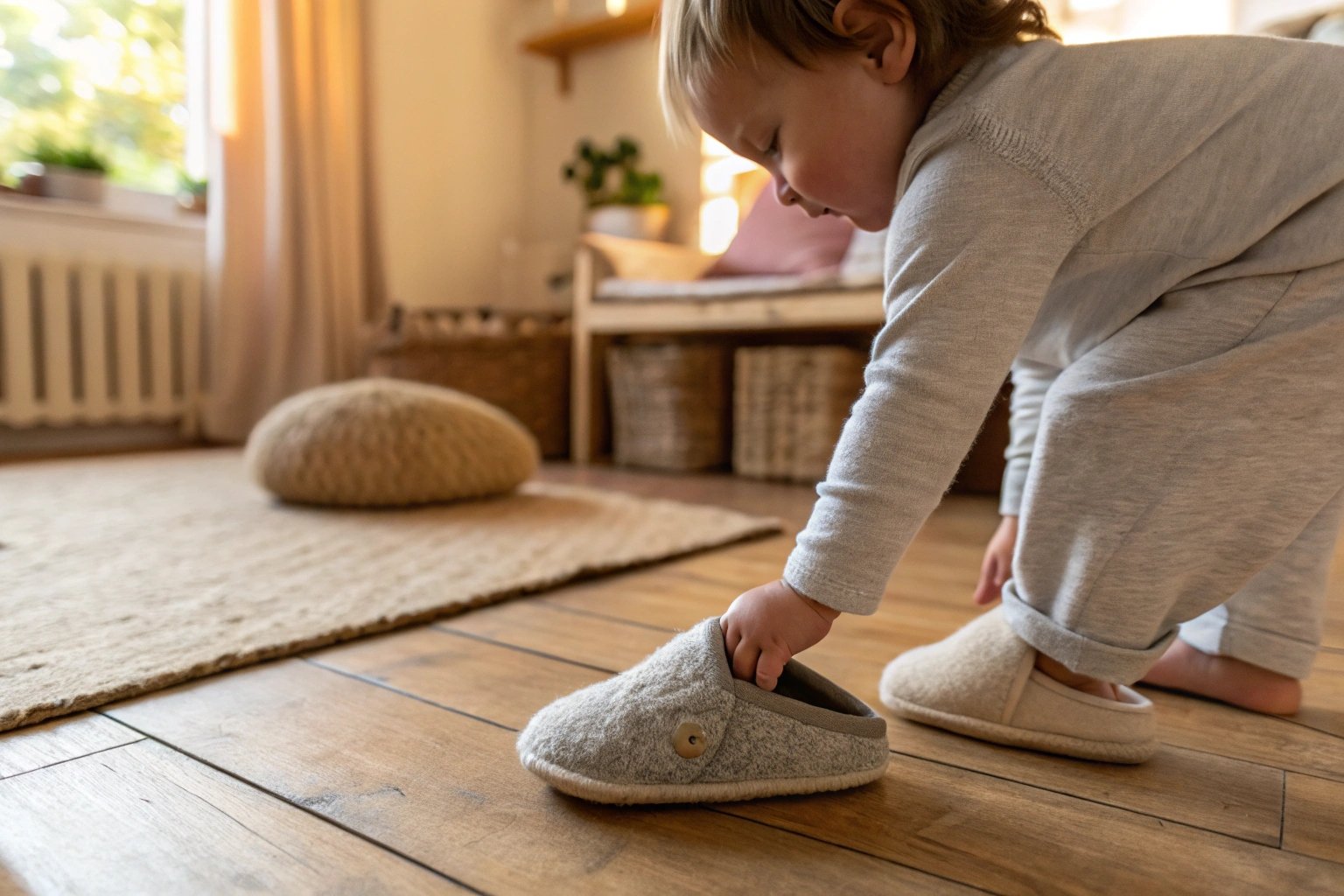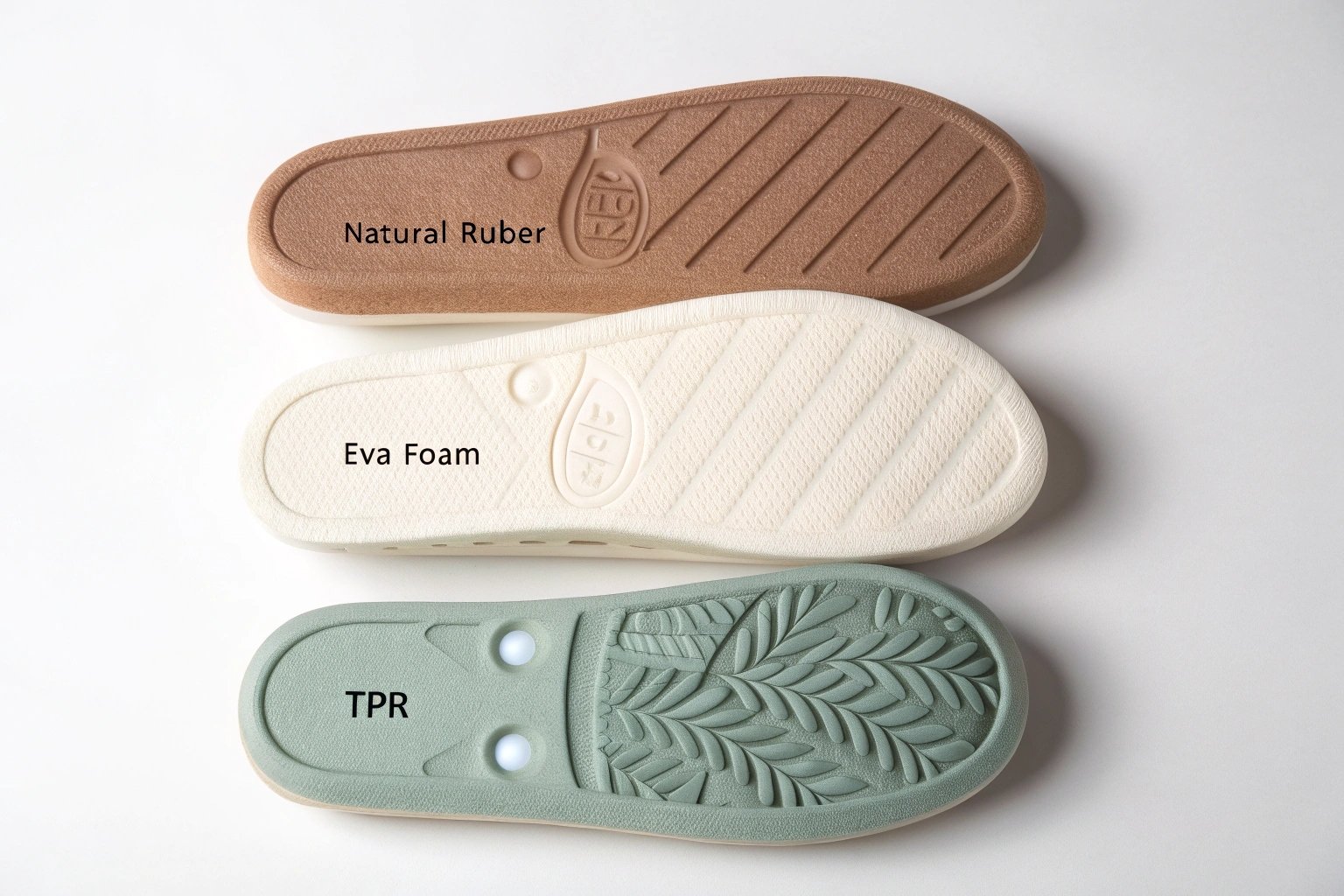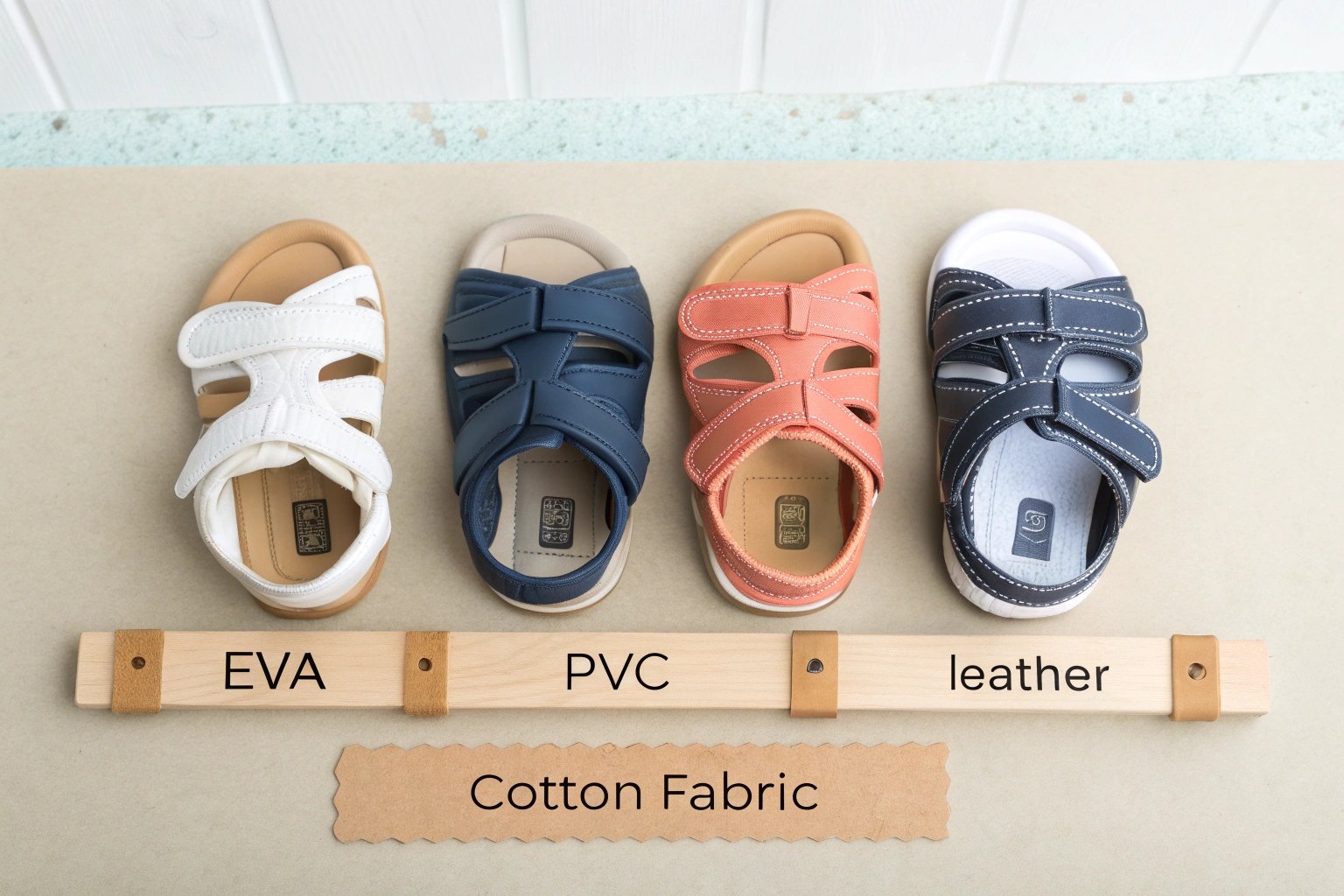Worried about your child’s safety and comfort? Choosing the right slipper material can make all the difference.
Not all materials are created equal. When it comes to children’s slippers, some materials pose risks and should be avoided. These include materials that are toxic, easily breakable, or uncomfortable.

Let’s dive into what makes a material unsuitable for children’s slippers. This will help you make the best choice for your little one.
What is the best material for kids slippers soles?
Are you looking for the perfect sole material for your child’s slippers? The right sole can provide comfort, safety, and durability.
The best materials for kids’ slipper soles are natural rubber, EVA (ethylene-vinyl acetate), and TPR (thermoplastic rubber). These materials offer good grip, flexibility, and wear resistance.

So, what makes these materials stand out? Let’s take a closer look.
First, let’s talk about natural rubber. It is a great choice because of its excellent grip. This helps to prevent slips and falls. Also, it is flexible, so kids can move naturally. But, it can be more expensive than other options.
Next, we have EVA. This material is lightweight and provides good cushioning. It is also inexpensive. This makes it a popular choice for many slipper manufacturers. However, it may not be as durable as rubber.
Finally, there is TPR. It combines the best qualities of rubber and plastic. TPR offers good grip, flexibility, and durability. It is also resistant to wear and tear. This makes it a good choice for active kids.
When I started my slipper business, my father insisted on using high-quality materials for the soles. He always said, "The sole is the foundation of a good slipper." He taught me that choosing the right sole material is essential for safety and comfort. That is why we focus on rubber, EVA, and TPR for our children’s slippers.
What are kids sandals made of?
Ever wondered what goes into making those cute little sandals? The materials used can affect your child’s comfort and foot health.
Kids’ sandals are commonly made from EVA, PVC, leather, or fabric. EVA is lightweight and flexible, PVC is durable and water-resistant, leather offers breathability and support, and fabrics provide comfort and style.

Let’s explore these materials in more detail to help you understand their pros and cons.
Here’s a breakdown of common sandal materials and what you should know:
| Material | Advantages | Disadvantages | Best For |
|---|---|---|---|
| EVA | Lightweight, flexible, inexpensive | Less durable than other materials | Casual wear, beach sandals |
| PVC | Durable, water-resistant, easy to clean | Can be stiff, may contain harmful chemicals | Water activities, playdates |
| Leather | Breathable, supportive, durable | More expensive, requires maintenance | Everyday wear, dressier occasions |
| Fabric (Cotton) | Soft, comfortable, absorbent | Can get dirty easily, not water-resistant | Indoor wear, light outdoor activities |
When choosing sandals, consider the activity your child will be doing. For example, EVA or PVC sandals are great for the beach because they are water-resistant and easy to clean. Leather sandals are good for everyday wear because they offer good support and breathability. Fabric sandals are comfortable for indoor use but may not be suitable for outdoor activities.
I remember when we first started making sandals. A customer asked about using recycled materials. This led us to explore more sustainable options. Now, we offer sandals made from recycled EVA and fabrics. It is important to me that we not only provide comfortable and safe slippers but also do our part for the environment.
Conclusion
Choose safe and comfortable materials for your children’s slippers, prioritizing soles with good grip and avoiding potentially harmful substances.

